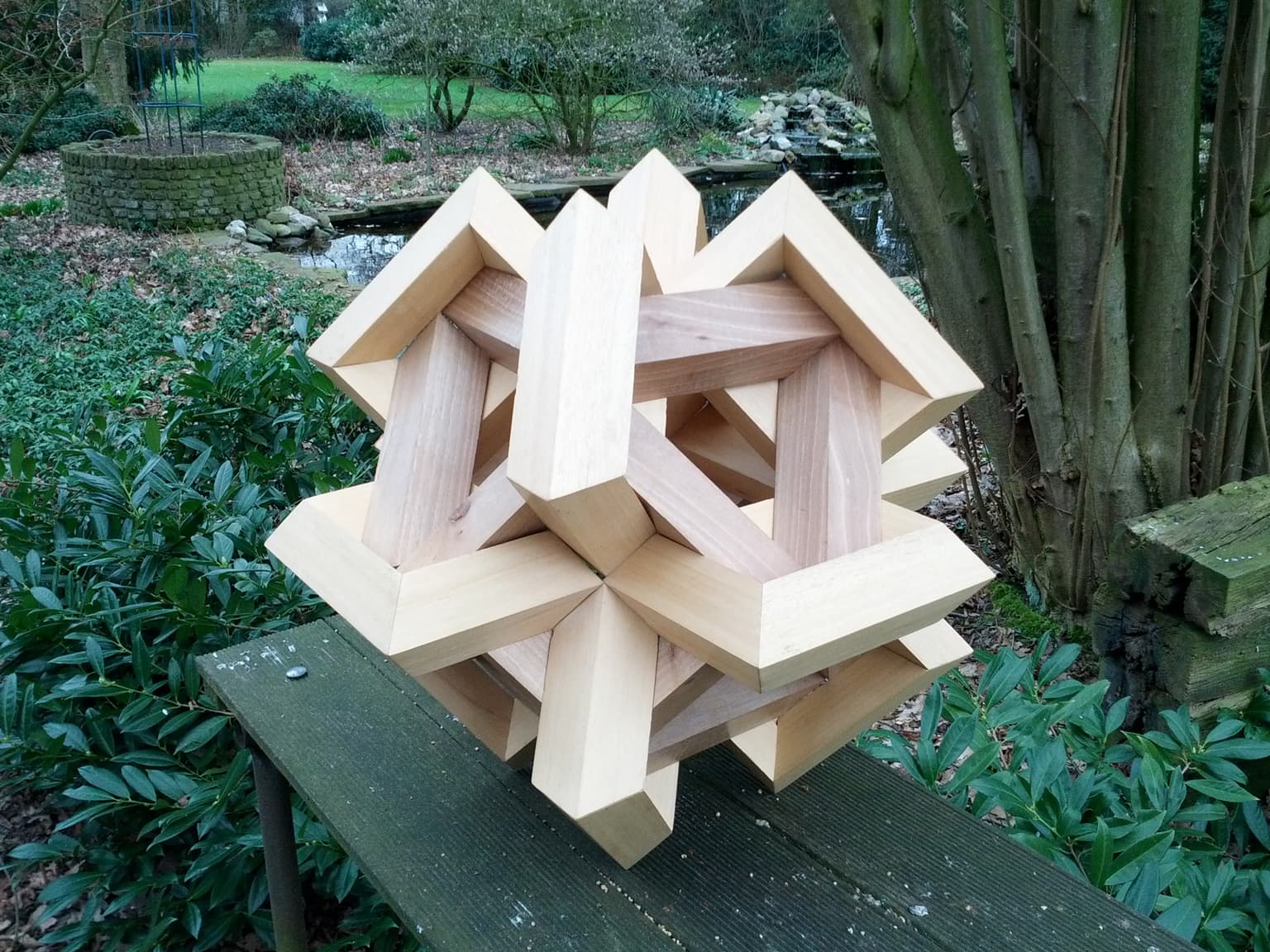Koos Verhoeff
Artists
Koos Verhoeff
Emeritus Professor of Computer Science
Dommelen, Netherlands
Statement
Koos Verhoeff, retired Full Professor of Computer Science at the Erasumus University Rotterdam, The Netherlands, has designed and constructed mathematical art since the early 1980s. He mainly designs 3D sculptures, constructed in wood, bronze, aluminum, stainless steel, and plastics, often involving mitered beams. He has described himself as more of an explorer and a discoverer than a designer. He wonders and wanders about the abstract world of mathematical structures, looking for forms with intriguing mathematical properties as well as aesthetic appeal.
Artworks

Cuboctahedron of Linked Frames
50 cm x 50 cm x 50 cm
Dark and light wood
2011
Cutting a beam, which has a 1:√2 rhombus as cross section, at 45 degrees can yield a square cut face. This in turn gives rise to a 90 degree miter joint. From this type of beam, six square frames are constructed in dark wood. The size of each square frame is such that it encloses a region of four square cut faces. These six dark square frames are arranged to form an octahedron. They are held together by twelve rectangular frames constructed from the same type of beam in light wood. The region enclosed by a rectangular frame has the size of two of the square cut faces. Alternatively, you could say that the six square frames hold together the twelve rectangular frames. Thus, each frame is exactly filled by the (four or two) beams that it embraces. The frames frame each other, thereby forming a polylink. The square frames lie in the faces of a cube, and the twelve rectangular frames correspond to the edges of a cube. The artwork can be positioned in two different ways.

Trefoil Knot from Triangular Beam
17 cm x 20 cm x 7 cm
Dark wood
2013
A beam with an equilateral triangle as cross section is cut to form 109,5 degree miter joints. The miter joints are such that one face of the triangular beam stays in the same plane as it crosses the joint. Under these restrictions, it turns out to be possible to construct a trefoil knot that exhibits all its symmetries (order 2 and order 3 rotations). The resulting artwork is executed in dark wood. An alternative view on this is that the faces of the mitered beams can be constructed from √2:1 rhombuses (see the article on this topic at the Bridges 2013 conference). Hence, this knot can also be constructed from -- nowadays rare -- Polydron √2:1 rhombuses.